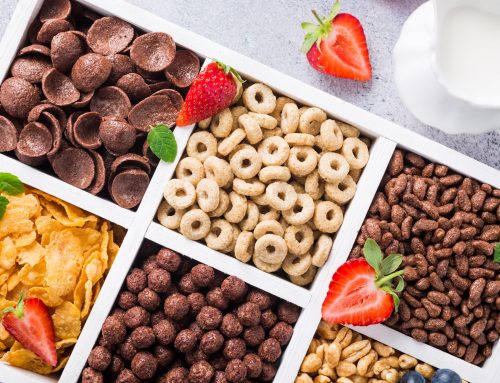Have you or a family member been prescribed a statin? Highly likely if you’re into middle age – over 6 million people in the UK are on the drug, and Pfizer’s Lipitor is the most profitable drug in the history of medicine. Originally, statins were only prescribed to people considered to be at high risk of having a heart attack. They are now increasingly prescribed to people over the age of 50 even if they have normal cholesterol levels. In 2014, NICE (the UK’s National Institute for Health and Care Excellence) revised their guidelines on when to initiate statin treatment, bringing the threshold down from a 20% risk of cardiovascular disease to 10%, making an estimated additional 4.5 million people “eligible” for statins. As you read on, you may see why many people (including doctors and researchers) are questioning the benefits of joining that club.
Statins are also offered increasingly to children. A few years ago, Pfizer clinched a deal with the EU to extend their patent in exchange for expanding their testing to include kids. They produced a grape-flavoured, chewable version that is available to children with a genetic predisposition to high cholesterol and heart disease (familial hypercholesterolemia). Some commentators are concerned that this will lead to similar marketing tactics in pediatric medicine that have been used by Pfizer in the adult market.
MacStatins and fries?
It was proposed a few years ago in the US that statins be added to the water supply – an idea thankfully rejected by the FDA. And some bright sparks, a group of cardiologists at Imperial College London, have even suggested in the American Journal of Cardiology that statins could be handed out in fast-food joints to counteract the effects of a “QuarterPounder with Cheese with a shake”.
Plenty has been written about why statins (and their cholesterol-lowering effects) are barking up the wrong tree when it comes to heart disease, and why cholesterol is an absolute necessity for health. In fact, LDL cholesterol levels have been shown to have an inverse relationship with death from any cause, so, the lower your LDL cholesterol, the more likely you may be to die from anything! I won’t go into this in detail in this article (you can watch a talk on the Nurtural YouTube channel about it here) – suffice it to say that at the root of cardiovascular disease is inflammation, causing arterial damage. In a nutshell, the body, in its innate wisdom, sends cholesterol to patch up this damage. This is like the emergency services being sent to the scene of a fire.
So, consider this scenario: fire engines seem to be appearing at every fire. A futuristic tech company notes this correlation and decides that fire engines cause fires, and so they come up with a brilliant machine to shrink them to Dinky toy size. The fire engines are rendered ineffective, but meanwhile, the fires are left to rage.
Anything or anyone that gets in the way of the shrink blasters also gets shrunk, like the water hydrants, and the local odd-job man, and the Tesco van that has come to deliver the groceries.
There’s only so far you can go with any analogy before it breaks down, so let’s return briefly to the real-life equivalent of the fire engines – the cholesterol – before returning to statins, the main shrink-blaster subject of this article, and the collateral damage when statins are put to work.
What happens with the cholesterol when it rushes to the scene? Well, it meets with those infamous free radicals from all the toxic abuse we subject our bodies to, and it becomes oxidised. This oxidised cholesterol is now a substance that the body doesn’t recognise, so the immune system sends its troops (the macrophages) to deal with the perceived foreign invader. In doing so, the macrophages turn into pathologic foam cells which adhere to the artery walls and attract calcium, which then further blocks up the arteries.
Hold that thought while we take a look at the political backdrop for a moment:
The statin war zone
The statins market is a hotbed of controversy and vicious rivalry, with drug companies slandering, suing and countersuing each other. In 2008, AstraZeneca accused Pfizer and its representatives of “serious misconduct” in claiming that AstraZeneca’s rival statin, Crestor, was damaging to the kidneys. Pfizer was fined $200,000. Loose change for a company that reached the $ trillion mark this year in 2020 from statin sales alone. An eye for an eye, though: AstraZeneca was fined $80,000 in a separate case between the two pharma giants, in which Pfizer claimed AstraZeneca had made misleading claims on a banner about Crestor.
Little wonder, then, against this high-stakes background, that balanced information on statins is hard to come by. Even among doctors, there is bitter division on whether statins are either worthless in preventing heart attacks, or a genuine, life-saving wonder drug. The literature is divided and confusing, too. And much of the data does not even make it into the studies. Trial data are buried in inaccessible archives, never to see the light of day, and people are weeded out from trials before they start if they experience side effects from taking the drugs (for more on this subject, watch this revealing talk by Dr Maryanne Demasi).
Much of the scientific literature claims that statins are the best thing since high-glycaemic bread. But a very clear waymarker dissects the statin-research timeline: in 2004, new regulations were introduced to prevent industry bias from influencing clinical trials. Perhaps not surprisingly, all trials published after 2004 showed that, although statins are extremely successful in lowering LDL cholesterol, they do not prevent heart disease. Sure, there have been plenty of meta-analyses since 2004 that conclude that statins do prevent heart disease… but these have included the biased data from before 2004. In contrast, a meta-analysis published in the British Medical Journal in 2015 showed that, on average, statins extended lifespan (known as “end-point postponement”) for people who had previously suffered a heart attack by a meagre 5.2 days! This is the so-called high-risk group that are at risk of being abandoned by their doctors if they don’t comply. And for those with no history of heart issues, statins on average bought them an extra 3.1 days of life. And meanwhile, someone, somewhere is getting extremely rich… on the back of peddling something that they claim to be vital to health.
So, what’s going on?
Firstly, statins are acting as a sticking plaster. They are indeed lowering cholesterol, but this is covering up the real issues. Secondly, the very mechanisms that achieve this lowered cholesterol are also interfering with some biochemical processes that are crucial not only to cardiovascular health, but also to general wellbeing.
Statins do not magically mop up the cholesterol that we get from food. They interfere with a biochemical pathway that makes cholesterol (the mevalonate pathway – which, contrary to popular opinion, is not a secret passage to Hogwarts). Yes, our miraculous cells in the liver actually make cholesterol if our diet doesn’t contain enough, and then lay off a bit if there’s plenty coming in in the diet. Like every system in the body, a series of checks, balances and feedback loops (homeostasis) ensures that we get enough cholesterol to not only soothe damage from inflammation, but also run (and protect) the brain, convert sunlight to vitamin D, immobilise bacterial toxins, synthesize sex hormones, keep cell membranes intact and firm, insulate nerve fibres, and assist in bile production to break down dietary fats. Our poor, maligned cholesterol must be the most vilified hero on the planet!

And what happens when these functions can’t happen satisfactorily because there’s not enough cholesterol to go around? It would be logical to think that the brain might not work properly, for example. In fact, research has shown that there is an inverse correlation between cholesterol levels and brain function, so in other words, the lower your cholesterol, the more likely you are to develop Alzheimer’s, and equally, higher cholesterol levels have been shown to be protective in that regard. Incidentally, Alzheimer’s overtook heart disease as the leading cause of death in the UK back in 2015. I’ll leave you to draw your own conclusions.
So, statins interfere with the cholesterol pathway. But cholesterol isn’t the only casualty. That same pathway is also responsible for making coenzyme Q10. CoQ10 is everywhere, which is why it’s in a family of molecules known as ubiquinones. As well as being a masterful antioxidant, CoQ10 is one of the major nutrients that allow the mitochondria to churn out energy to fuel our nerves, brain cells and tissues. Muscles and organs have a high concentration of mitochondria, as they are the workers that need a supply of energy to perform their everyday miracles. But statins act high up in the mevalonate pathway, starving CoQ10 of its precursors. It doesn’t take a genius to figure out that inhibiting CoQ10 production can affect muscle performance, as well as cause muscle pain – one of the most common side effects suffered by people on statins. Not only that, but one crucial muscle and organ that relies on a high concentration of mitochondria is the heart! The heart is one heck of a hungry organ when it comes to energy. So the very thing that statins are supposed to protect is being deprived of a major energy source, and depletion of CoQ10 has indeed been directly linked to heart failure.
The mevalonate pathway saga doesn’t end there. This amazing series of reactions is also responsible for making numerous other proteins that are important for cardiovascular health. One of these proteins converts vitamin K1 to K2, and K2 is currently one the most fascinating areas of nutrition research – with far-reaching implications. For an insight into what K2 does to keep you alive and kicking, check out the video below. If you don’t have an hour to spare just now, keep reading.
A talk by David Griffiths and Angela Henderson
In short, K2’s connection with the cardiovascular system is that it activates the protein (Matrix GLA protein, to be specific) that signals calcium to move out of the arteries, where it is otherwise liable to hang around and congregate in those inflamed areas. K2 is very difficult to get from the diet, and when we can’t convert K1 (a more abundant source, through leafy green vegetables) to K2 in the body, then calcification of the arteries is something we need to be concerned about, especially if we’re not dealing with the underlying inflammation that I mentioned earlier. The correlation between arterial calcification and heart disease is 100%, whereas only half the people who have heart attacks have “high” cholesterol. The other main function of K2 is to activate another protein called osteocalcin, which is necessary for shunting the calcium to where everyone assumes it will go – into the bones.
This super-highway that ends in cholesterol production also branches off before its final destination into making proteins that work with selenium to protect and manage a myriad of functions in the body. These “selenoproteins” include the enzyme class of master antioxidants, glutathione peroxidase, which is part of the body’s critical arsenal against oxidative damage and inflammation (are you seeing a pattern here?). Other selenoproteins are important for the thyroid to function properly, and one of the functions of the thyroid is to regulate cholesterol levels!
Other serious effects of statins have been discussed in the literature, such as increased risk for type 2 diabetes, although the exact mechanisms that cause this are not yet clear.
Statins may well save lives, but not in the generally touted way. They have been shown to suppress the immune system, which is important if you are a transplant patient, as you don’t want your immune system to go into overdrive to reject your new organ. But for most people, an average life extension of 100th of 1% of life expectancy may not swing it, given the significant implications for quality of life and health.
With thanks, as always to David Griffiths for his invaluable advice on the draft of this article.
References
Drugs.com. (2020). Simvastatin. https://www.drugs.com/ppa/simvastatin.html
Beltowski, J., Wojcicka, G. & Jamroz-Wisniewska, A. (2009). Adverse effects of statins – Mechanisms and consequences. Current Drug Safety. 4, 209-228.
Cauley, J. (2014). Estrogen and bone health in men and women. Steroids. 99(A), 11-15.
DiNicolantonio, J., Bhutani, J., McCarty, M.F., & O’Keefe, J.H. (2015). Coenzyme Q10 for the treatment of heart failure: a review of the literature. Open Heart. 2(1), 1-5.
Drake, I., Sonestedt, E., Ericson, U., Wallström, P. & Orho-Melander, M. (2018). A Western dietary pattern is prospectively associated with cardio-metabolic traits and incidence of the metabolic syndrome. British Journal of Nutrition. 119, 1168-1176.
Electronic Medicines Compendium. (2020). Simvastatin 10 mg film-coated tablets. https://www.medicines.org.uk/emc/product/5999/smpc.
Gazzero, P., Proto, M.C., Gangemi, G., Malfitano, A.M., Ciaglia, E., Pisanti, S., Santoro, C.L., & Bifulco, M. (2012). Pharmacological actions of statins: A critical appraisal in the management of cancer. Pharmacological Reviews. 64(1), 103-146.
Khosla, S., Oursler, M.J. & Monroe, D. (2012). Estrogen and the skeleton. Trends in Endocrinology & Metabolism. 23(11), 576-581.
Kim, C., Ko, H., & Ryu, W. (2008). Longitudinal follow-up study for changes in lipids and lipoproteins during the perimenopause. Atherosclerosis Supplements. 9(1), 97.
Li, Y., Chen, J.P., Duan, L. & Li, S. (2018). Effect of vitamin K2 on type 2 diabetes mellitus: A review. Diabetes Research and Clinical Practice. 136, 39-51.
Ma, S.C., Goh, E.L., Tay, T., Wiles, C.C., Boughton, O., Churchwell, J.H., Wu, Y., Karunaratne, A., Battacharya, R., Terrill, N., Cobb, J.P., Hansen, U. & Abel, R.L. (2020). Nanoscale mechanisms in age-related hip fractures. Scientific Reports. 10, 14208.
Maresz, K. (2015). Proper Calcium use: Vitamin K2 as a promoter of bone and cardiovascular health. Integrative Medicine: A Clinician’s Journal. 14(1), 34-39.
National Center for Biotechnology Information (2020). PubChem Compound Summary for CID 54454, Simvastatin. Retrieved October 26, 2020 from https://pubchem.ncbi.nlm.nih.gov/compound/Simvastatin.
Ohnaka K., Shimoda S., Nawata H., Shimokawa H., Kaibuchi K., Iwamoto Y., & Takayanagi R. (2001). Pitavastatin enhanced BMP-2 and osteocalcin expression by inhibition of Rho-associated kinase in human osteoblasts. Biochemical and Biophysical Research Communications. 287, 337–342.
Okuyama, H., Langsjoen, P.G., Hamazaki, T, Ogushi, Y., Hara, R., Kobayashi, T. & Uchino, H. (2015). Statins stimulate atherosclerosis and heart failure: pharmacological mechanisms. Expert Review of Clinical Pharmacology. 8(2), 189-199.
Pate, A., Emsley, R. & van Staar, T. (2020). Impact of lowering the risk threshold for statin treatment on statin prescribing: a descriptive study in English primary care. British Journal of General Practice. 70 (700): e765-e771.
Ravnskov, U., Diamond DM, Hama R., Hamazaki, T., Hammarskjöld, B., Hznes, N., Kendrick, M., Langsjoen, P.H., Malhotra, A., Mascitelli, L., McCullz, K.S., Ogushi, Z., Okuzama, H., Rosch, P.J., Schersten, T., Sultan, S. / Sundberg, R. (2016). Lack of an association or an inverse association between low-density-lipoprotein cholesterol and mortality in the elderly: a systematic review. BMJ Open. 2016, 6:e010401.
Rayman, M.P. (2000). The importance of selenium to human health. The Lancet. 356(9225), 233-241.
Saini, R. (2011). Coenzyme Q10: The essential nutrient. Journal of Pharmacy & BioAllied Sciences. 3(3), 466-467.
Singh, B., Arora, S., Goswami, B. & Mallika, V. (2009). Metabolic syndrome: A review of emerging markers and management. Diabetes & Metabolic Syndrome: Clinical Research & Reviews. 3(4), 240-254.
Ventura, M., Melo, M. & Carrilho, F. (2017). Selenium and thyroid disease: from pathophysiology to treatment. International Journal of Endocrinology. 2017, 1-9.
Weivoda, M.M., & Oursler, M.J. (2014). The roles of small GTPases in osteoclast biology. Orthopedic & Muscular System: Current Research. 3(3), 160.
Wu, J.S., Buettner, C., Smithline, H., Long, H. & Greenman, R.L. (2010). Evaluation of skeletal muscle during calf exercise by 31-phosphorus magnetic resonance spectroscopy in patients on statin medications. Muscle & Nerve. 43(1), 76-81.





Leave A Comment